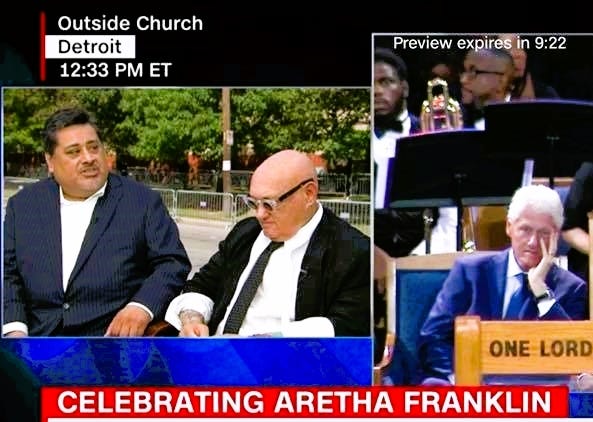Ambassador Bridge owners raze ex-Greyhound bus building in hopes of expanding bridge area
 Louis Aguilar
Louis AguilarClarification: The former bus station property will not be part of the outdoor plaza but will make way for that development.
The owners of the Ambassador Bridge are razing a former Greyhound bus building in southwest Detroit as part of their goal to expand the international bridge.
Demolition began last month on a two-block-long building at 2300 W. Fort Street. The private owners of the bridge want to use part of the property to help expand the bridge's outdoor plaza area, which now ends about two blocks away.
But the approval process to expand the plaza is in the early stages, according to officials from the city of Detroit and the bridge company. There's also a host of state and federal approvals and reviews still needed.
The demolition is part of a "community agreement" announced in October between the bridge owners, the city of Detroit and the Hubbard Richard Residents Association. The city and the bridge owners agreed to work on the proposed plaza expansion. For the neighborhood group, a key part of the deal is the bridge owners vowed to stop buying residential properties near the bridge.

"We continue to move forward with the demolition of the Greyhound building, as stated in our agreement," said Kenneth Dobson, vice president of the Detroit International Bridge Company, DIBC. "In addition, we have committed to donating and investing approximately $9.5M in the community, not including utility upgrades that are estimated in the hundreds of thousands of dollars."
An entity linked to the bridge company has owned the former bus garage for years. After demolition, the DIBC has agreed to split the property into two parcels and donate the larger parcel to the neighborhood for non-industrial redevelopment.
The demolition help makes way for the expansion of the plaza area by two blocks between West Fort and West Lafayette. The current demolition site would not become part of the plaza area, according to the neighborhood group, though the bridge company will retain control of part of the property.
Demolishing the former bus garage is just one part of the October pact. The bridge company has also agreed to: build a "new 16th Street" between West Lafayette and West Fort to improve access to the neighborhood; donate 10 properties in and around Hubbard Richard to the neighborhood along with $20,000 per property to assist in redevelopment; and contribute property to the city with the intent it be incorporated into the city's Roberto Clemente Recreation Center, 2631 Bagley St.
The donations would take place if Detroit City Council approves the project and community benefits agreement.
As of now, permission to rezone the area "are still making their way to City Council," said John Roach, a spokesman for Mayor Mike Duggan. The city's planning commission first needs to approve the rezoning and refer it to the council.
"If approved, we expect that and other approvals (of the agreement) will be taken up by City Council after the conclusion of their annual budget process, in late April or May," Roach said in a written statement to The News.

The bridge company hasn't provided a timeline for the various goals in the community agreement. City officials are not aware of "a specific timeline" when the bridge company aims to construct the expanded plaza.
Beyond city approval, the proposed plaza expansion would need various approvals and reviews from the State of Michigan Department of Transportation, MDOT, and the Federal Highway Administration, said MDOT spokesman Jeff Cranson.
"MDOT officials would weigh in on encroachment into MDOT limited access right of way and lateral clearance limitation from the roadway, which would entail Federal Highway Administration review and approval," Cranson said in a Monday email to The News.

Cranson also listed a number of permit applications and reviews regarding the structure and design of the proposed new wall that would separate the bridge area from the public, along with drainage details.
"Detailed cross-sections of the proposed improvement from beginning to end," Cranson said.
laguilar@detroitnews.com